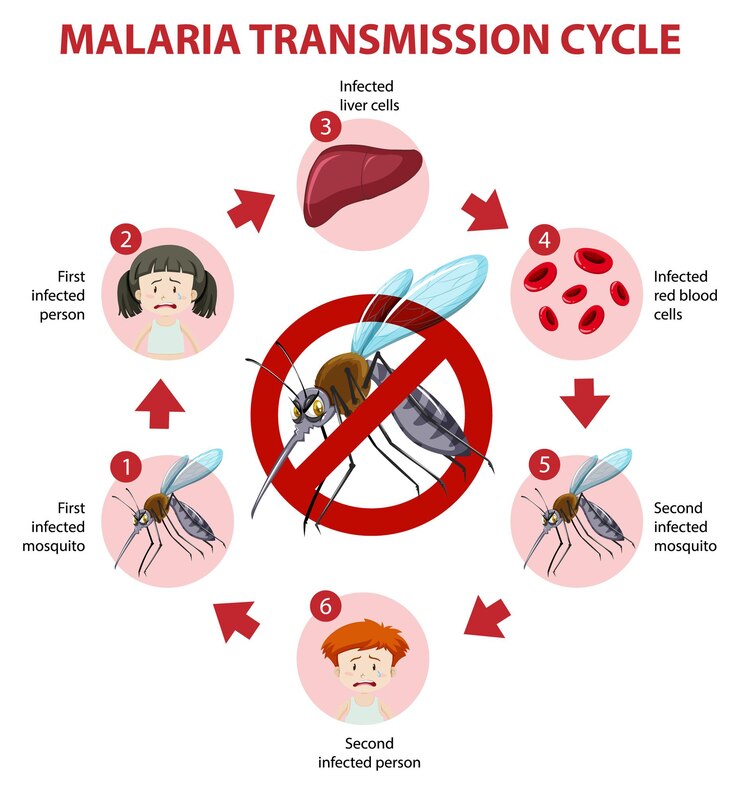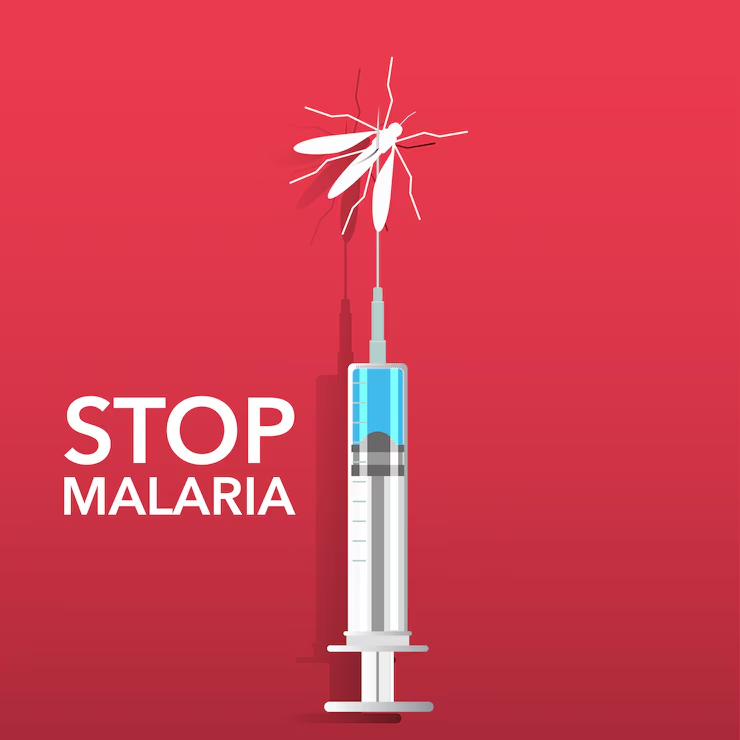Last updated on January 2nd, 2025 at 04:18 pm
Introduction to Malaria
Infected female Anopheles mosquitoes bite humans to spread the potentially fatal parasitic disease known as malaria. It is preventable and curable. Malaria occurs mostly in tropical and subtropical regions where the climate provides a suitable environment for malaria parasites to develop and multiply. The World Health Organisation (WHO) estimates that there were 229 million cases of malaria worldwide in 2019, with 409,000 deaths as a result.
The fight against malaria is a global health priority, as it not only affects the health of millions of people but also has socio-economic consequences, especially in developing countries. This article aims to provide an in-depth understanding of the malaria life cycle, its stages, mode of transmission, the malaria mosquito name, diagnosis, prevention, control, treatment, and research and development.
Understanding the Malaria Life Cycle
The malaria life cycle is a complex process involving both the human host and the Anopheles mosquito vector. The cycle begins when an infected female Anopheles mosquito takes a blood meal from a human host, transmitting the malaria parasites (Plasmodium species) into the bloodstream. The liver is the next stop for the parasites, where they mature and reproduce. After maturation, the parasites enter the red blood cells, multiply again, and cause the blood cells to rupture. This release of new parasites leads to recurring fever and other symptoms associated with malaria.
Understanding the malaria life cycle is crucial for developing effective prevention and treatment strategies. As the malaria parasites go through several stages during their life cycle, each stage presents a potential target for intervention. By targeting the different stages of the malaria life cycle, researchers can develop drugs and vaccines to interrupt the transmission of the disease and reduce its impact on human health.
Stages of Malaria
The stages of malaria are divided into three main stages: the exoerythrocytic stage, the erythrocytic stage, and the sexual stage.
- Exoerythrocytic stage: This stage occurs in the human liver. When the malaria parasite enters the human bloodstream through a mosquito bite, it quickly travels to the liver and invades the liver cells. Here, the parasite multiplies asexually, forming thousands of new parasites called merozoites. This stage is asymptomatic and can last anywhere from 5 to 16 days, depending on the Plasmodium species.
- Erythrocytic stage: The merozoites released from the liver cells enter the red blood cells and multiply, forming a structure called a schizont. The infected red blood cells eventually rupture, releasing more merozoites into the bloodstream, which can invade other red blood cells. This stage is responsible for the clinical symptoms of malaria, such as fever, chills, and anaemia.
- Sexual stage: Some of the merozoites differentiate into sexual forms called gametocytes. When a female Anopheles mosquito bites an infected human, it ingests the gametocytes, which then mature into male and female gametes in the mosquito’s gut. The gametes fuse to form a zygote, which becomes an ookinete that penetrates the mosquito’s gut wall and forms an oocyst. The oocyst releases sporozoites, which migrate to the mosquito’s salivary glands, ready to be transmitted to another human host during the next blood meal.

The Mode of Transmission of Malaria
The main mode of transmission of malaria is through being bitten by an infected female Anopheles mosquito. The mosquito becomes infected when it feeds on a human carrying the malaria parasites. Once inside the mosquito, the parasites go through several stages of development before they are ready to be transmitted to another human host. It is important to note that malaria is not contagious and cannot be directly transmitted from person to person.
There are other, less common modes of transmission of malaria, such as congenital malaria (from mother to infant during pregnancy or childbirth), transfusion malaria (through contaminated blood transfusions), and needle-stick injuries or contaminated needles. However, these modes of transmission are rare compared to mosquito-borne transmission.
The Malaria Mosquito Name
The Anopheles mosquito is responsible for transmitting malaria. There are over 400 species of Anopheles mosquitoes, but only about 30 of them are considered major vectors of malaria. Different species of Anopheles mosquitoes have different feeding and breeding habits, which can influence the transmission of the disease. The primary Anopheles species that transmit malaria include Anopheles gambiae, Anopheles funestus, Anopheles arabiensis, and Anopheles stephensi.
Malaria Diagnosis
Early and accurate diagnosis of malaria is essential for effective disease management and control. Malaria diagnosis is based on clinical symptoms, such as fever, chills, and headache, combined with laboratory confirmation. The gold standard for malaria diagnosis is a microscopic examination of blood samples, which allows the identification of the malaria parasites and the determination of the Plasmodium species.
Rapid diagnostic tests (RDTs) are another method used for malaria diagnosis, especially in areas with limited access to microscopy. RDTs are easy to use, provide results within 20 minutes, and do not require electricity or specialized equipment. However, RDTs have some limitations, such as lower sensitivity compared to microscopy and the inability to differentiate between Plasmodium species.
Polymerase chain reaction (PCR) and other molecular techniques can also be used for malaria diagnosis, but these methods are usually reserved for research purposes or for confirming difficult cases, as they are more complex and expensive compared to microscopy and RDTs.
Malaria Research and Development
Malaria research and development is an ongoing process that aims to improve existing interventions and develop new tools for malaria prevention, control, and treatment. Some of the main research fields are as follows:
- Drug development: The emergence of drug-resistant malaria parasites necessitates the continuous development of new and effective antimalarial drugs.
- Vaccine development: Although there is currently no licensed malaria vaccine, several candidates are in various stages of clinical trials. The most advanced candidate is the RTS,S/AS01 vaccine, which has shown partial protection against malaria in children.

- Vector control: Research on novel vector control strategies, such as genetic modification of mosquitoes to reduce their ability to transmit malaria or the development of new insecticides with different modes of action, is essential for maintaining effective malaria control.
- Diagnostics: The development of new and improved diagnostic tools, such as more sensitive and specific RDTs or point-of-care molecular tests, can help improve malaria case management and surveillance.
Conclusion
Understanding the malaria life cycle, from transmission to diagnosis, is essential for the effective prevention, control, and treatment of this life-threatening disease. The malaria life cycle is a complex process involving both the human host and the Anopheles mosquito vector, with each stage presenting potential targets for intervention. By combining a range of strategies, such as insecticide-treated mosquito nets, indoor residual spraying, antimalarial drugs, and health education, the global community can continue to make progress towards reducing the burden of malaria and ultimately achieving its eradication.
Call To Action

Visit Medkart to get the best generic medicines at the lowest prices, today!
